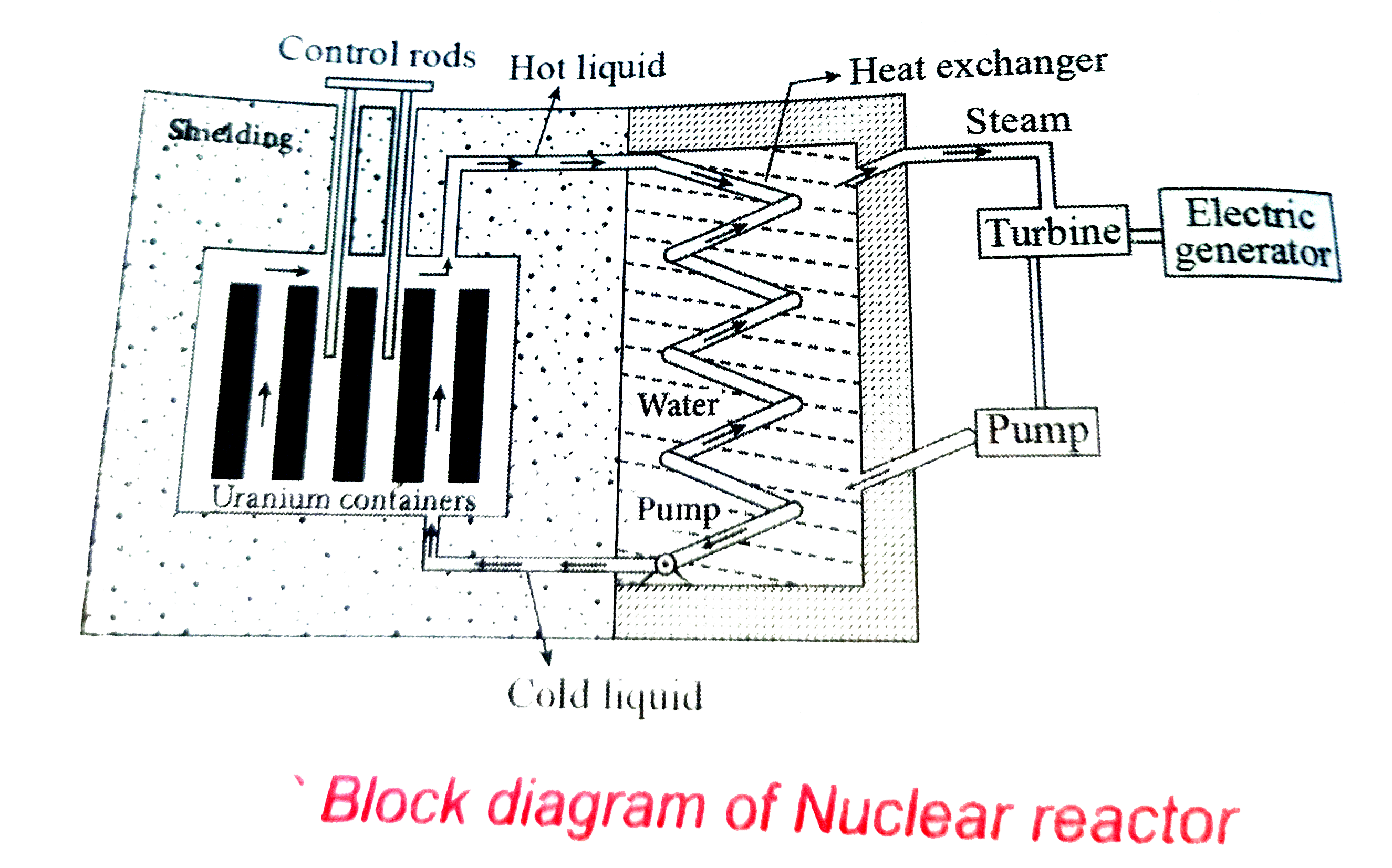Describe the working of nuclear reactor with a block diagram .

Text Solution
Nuclear reactor : It is a system in which the nuclear fission takes places in a self - sustained controlled manner and the energy produced is used either for research purpose or for power generation . The main parts of a nuclear Nuclear reactor are fuel, moderator, control rods and a cooling system which is connected with power generation setup.
Fuel: The fuel is fissionable material, usually uranium 23592U or enriched 23592U or plotonium. A mixture of beryllium with plutonium or polonium is used as the neutron source. During fission, only fast neutrons are emitted but the probability of initiating fission by it in another nucleus is very low. Therefore, slow neutrons are preferred for sustained nuclear reactions,
moderators: the moderator is a material used to convert fast neutrons into slow neutrons, usually the moderators are chosen in such a way that it must be very light nucleus having mass comparable to that of neutrons . Most of the reactors use water, heavy water and graphite as moderators. The blocks of uranium stacked together with blocks of graphite to form a large pile is shown in block diagram of nuclear reactor.
Control rods: Usually cadmium or boron acts as control rod material and these rods are inserted into the uranium blocks. Depending on the insertion depth of control rod into the uranium, the average number of neutrons produced per fission is set to be equal to one or greater than one. If the average number of neutrons produced per fission is equal to one, then reactor is said to be in critical state. If it is greater than one, then reactor is said to be in super-critical and it may explode sooner or may cause mass destruction.
Shielding: For a protection against harmful radiations, the nuclear reactor is surrounded by a concrete wall of thickness of about 2 to 2.5 m.
Cooling system: The cooling system removes the heat generated in the reactor core. Ordinary water, heavy water and liquid sodium are used as coolant since they have very high specific heat capacity and have large boiling point under high pressure. This coolant passes through the fuel block and carries away the heat to the steam generator through heat exchanger as shown in Fig. The steam runs the turbines which produces electricity in power reactors.
|
Updated on:21/07/2023
Similar Questions
In a nuclear reactor
View SolutionNuclear Reactors
View SolutionIn a nuclear reactor.
View SolutionIn a nuclear reactor.
View SolutionBriefly describe the working of a nuclear reactor
View SolutionFirst nuclear reactor was built in
View SolutionFirst nuclear reactor was built in
View SolutionWrite a detailed note on nuclear reactor with diagram.
View SolutionWhat is the essential difference between the working of a nuclear reactor and that of a fission bomb?
View SolutionGraphite is used in nuclear reactor :
View Solution

